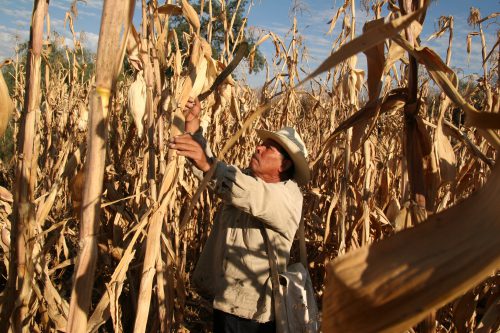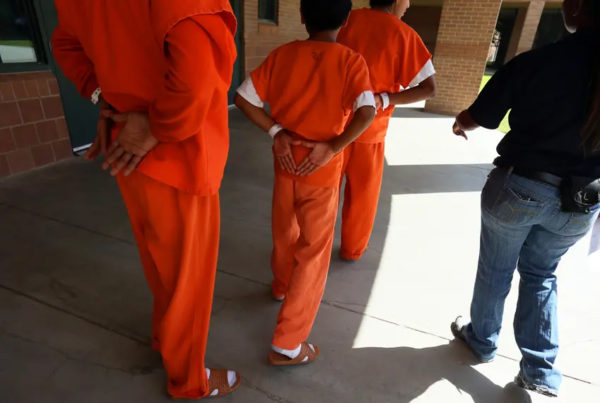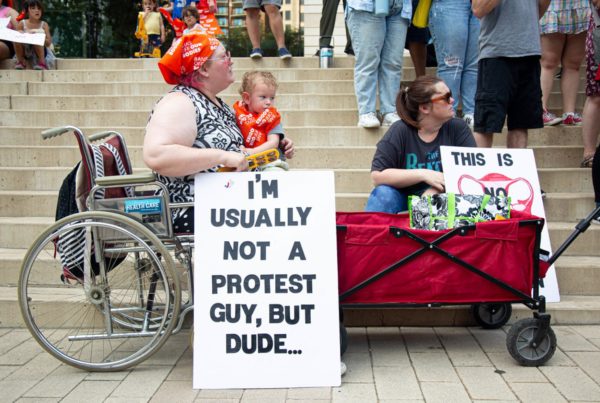The pandemic profoundly changed how we live and work. It also changed where we live and work.
Labor Department data analyzed by the think tank Brookings Institution shows that red states – Texas and Florida in particular – are faring better than others when it comes to economic recovery. Meanwhile, blue states like California and New York saw people leaving, often in search of more affordable places to live.
Josh Mitchell wrote about the trend for the Wall Street Journal, where he covers the U.S. economy. Listen to the interview above or read the transcript below.
This transcript has been edited lightly for clarity:
Texas Standard: Let’s define what we mean by red states and blue states, at least as you looked at them for your story.
Josh Mitchell: Right. So we used an index by the Cook Political Report, which is a political outfit that looks at how states voted in the past two presidential elections.
So what are some of the states that had the biggest in-migration, and what states saw the most people leaving?
Texas, Tennessee, Florida – those are the ones that have really gotten a lot of people moving into them over the past year. And then a lot of people are moving out of California, New York, Illinois. A lot of these states that had seen growth over the past 20 years, now they’re seeing outmigration.
What accounts for that? I hear Texas and Florida and I’m thinking immediately, no personal income tax. The other states are known to be high-tax states. Is that what’s happening?
I think that’s one of many factors. You know, when people move, often it doesn’t come down to just one thing; there’s multiple things at play. You know, the research suggests that one of the biggest factors over the past year or so is people are just trying to find cheaper housing.
In the past, before the pandemic, there were a lot of people who had to work in California or they had to work in New York. And then when the pandemic happened, all of a sudden their employer said, ‘hey, you can work from home,’ which meant you can even work from a different state if you want to. So there was a significant amount of the population who suddenly became untethered to their desks in these places where they had to work, and they could take the salary that they had and instantly upgrade their lifestyle by going to Texas and finding cheaper housing.
What about the number of jobs in these states? Because it’s not always the case that you have a worker who can move wherever they want to and work from home. What does employment look like in some of the states that people are moving to, compared to those that they’re moving away from?
Well, red states have gained about half a percentage point of all U.S. employment across the country. So we have seen these states seeing stronger job growth than blue states. I think what’s happening is several things: One is that, you know, a lot of workers are moving to these states to find cheaper housing, and then that kick-starts economic activity in those states.
So if you move to Austin and you buy a house and then you buy stuff for your house, or you hire someone to work on your house and do upgrades to the house you just bought, that kick-starts a lot of economic activity. And so what we’re seeing is, you know, just a stronger economic recovery in these red states than the blue ones that are losing people.
What’s been the effect in those blue states?
First of all, we’ve seen just slower economic growth overall. So if you look at restaurant sales, fewer people are going out to restaurants compared to prior to the pandemic. And compared to red states, fewer people are buying retail sales. You know, they’re not going out and shopping.
Home sales aren’t as strong in some of these areas, although in some of them they are. Just in general, we’re seeing a slower economic recovery. If you look at downtown in San Francisco, a lot of the office space is empty, whereas in Houston and Austin, a lot of that space has been filled up, at least compared to the bluer cities, bluer states. And then you take a look at things like schools: I found a school district in Northern California that is having to close some schools because the population has dwindled and school enrollment has fallen. So, you know, this really has a big impact on people’s lives.
But there are some cross-currents – lawmakers in red states are moving to change their laws on abortion; we’ve seen a lot of LGBTQ people feeling like they’re targeted in these red states. Are these trends expected to continue? Some of these political variables are really important to a lot of potential workers.
Yeah, that’s a very big question mark. I don’t have the answer to that. And that is, I think, one of the most interesting things to look at over the next couple of years. You know, are some of these people going to sort of change the political landscape in the states that they now live in? Is that going to change voter registration patterns? Are they going to move back? You know, we have seen some people move back to New York, for example, but it’s still in the hole when you look at where their economy is.
And, you know, the other big point is, we are starting to see sharp home price growth in Texas and Florida. So the very thing that gave these states an advantage, you know, now they might start to lose that advantage. And you take a look at Austin, and I think there’s a lot of expectations that they’re going to suffer from some of the same problems that San Francisco suffered from. You know, people left San Francisco because it’s a really high-cost city, maybe there’s traffic issues, there’s crime. Well, are some of those problems now going to migrate over to these cities where people move to, these states where people move to? And will that take away the advantage? So we’ll have to see what happens there.















